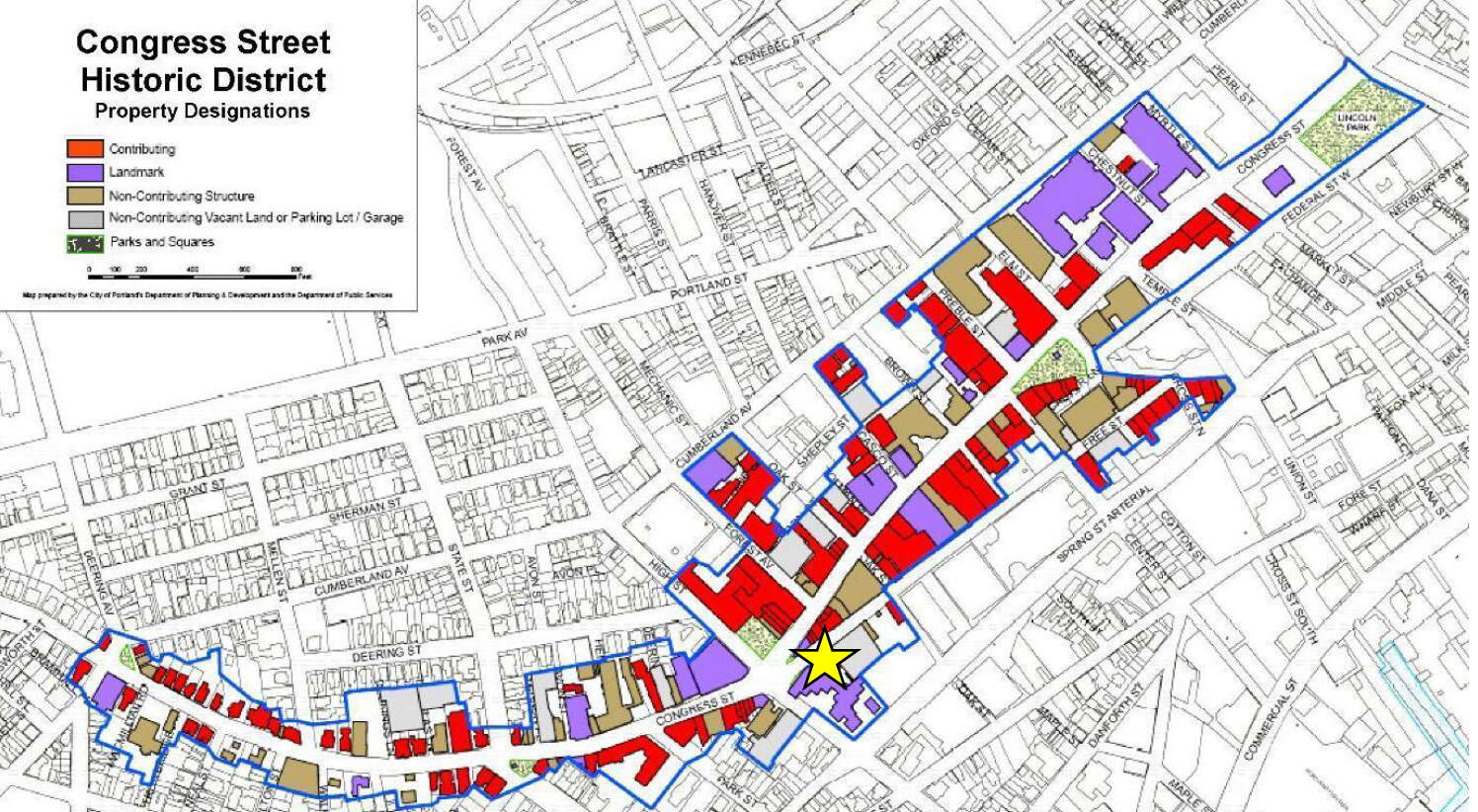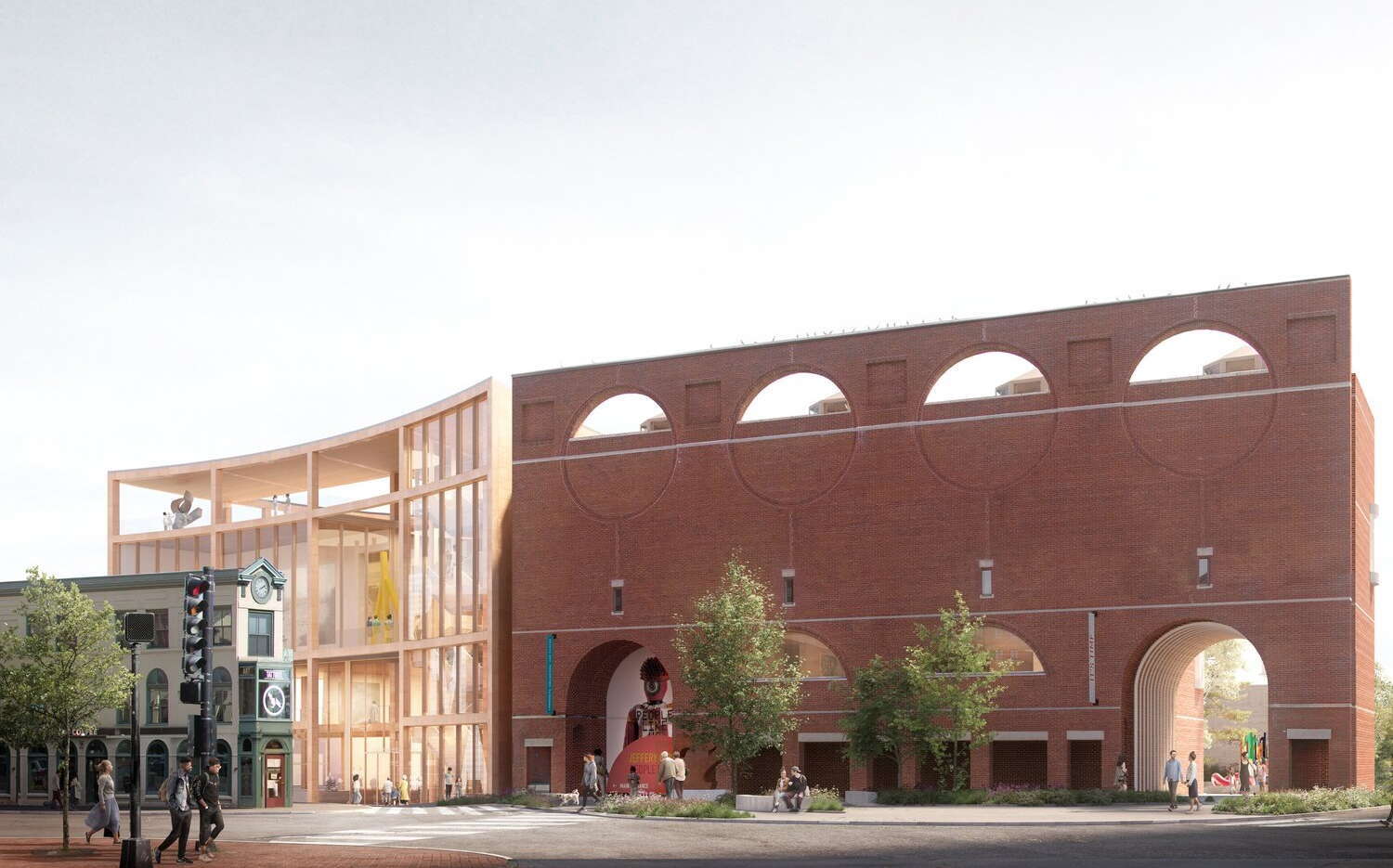
Preservation board urges city to reject Portland Museum of Art's effort to raze 142 Free St.
 FILE PHOTO / PETER VAN ALLEN
The building at 142 Free St. in Portland dates back to 1830 and was acquired by the Portland Museum of Art in 2019.
FILE PHOTO / PETER VAN ALLEN
The building at 142 Free St. in Portland dates back to 1830 and was acquired by the Portland Museum of Art in 2019.
At its Wednesday meeting, the Portland Historic Preservation Board voted unanimously to reject a proposal by the Portland Museum of Art to reclassify its building at 142 Free St. as a "non-contributing" structure in the Congress Street Historic District.
The proposal was part of the museum's sweeping $100 million plan for expansion, which includes razing the building next door that dates to 1830. The building formerly housed the Children's Museum & Theatre of Maine and, going back, the area chamber of commerce. The PMA bought the building in 2019.
The Historic Preservation Board does not have the final say on the matter. A decision about the building's fate would be in the hands of the Planning Board and City Council.
At Wednesday’s hearing on the proposal, the museum's director, Mark Bessire, argued that the building should not be considered a contributing structure to the historic district. He cited aspects such as alterations to interior and exterior elements and the addition of modern materials, design and features such as windows, dormers and a cupola added after the original construction.
The requested change to the district was “a singular and unique case” because it was solely related to PMA’s one-time expansion plan, Bessire said.
He said the museum's proposal for a new wing at 142 Free St. would benefit the surrounding neighborhood.

“Congress Square is failing,” Bessire said, citing closed and vacant buildings in the area, including this week’s closure of Coffee By Design’s original location at 620 Congress St. (Coffee By Design maintains its other locations at 1 Diamond St. and 67 India St.)
“This area, the heart of the city, is on life support,” Bessire said.
The Portland Museum of Art's project, including redevelopment of 142 Free St., he said, would be “transformative” for the area.
“We are prepared to deliver on the potential of this neighborhood,” he said.
Bessire acknowledged that opponents of the proposed demolition have expressed a desire to preserve 142 Free St., potentially as a part of the project. But the only alternative to razing the building would be to reorient the main entry away from Congress Square to the rear of the building — on Spring Street.
Still, he continued, “The property will never adequately support the museum’s collection, gallery and public needs.”
The counter-argument
During the public comment period, one resident accused the museum of “coming back with a dog-and-pony show” and “trying to win on marketing rather than the letter of the law.”
“The claim that this would not set a precedent strikes me as particularly odd,” the commenter said.
He added, “This is precedent-setting,” and would have a detrimental effect not only on the district but on the historic preservation ordinance as a whole.
Carol De Tine, vice president of Greater Portland Landmarks, said her organization supports the museum's expansion but opposes the proposal.
Preservation and new construction don’t have to be mutually exclusive, De Tine said.
“The ordinance was thoughtfully drafted” and has “preserved countless historic buildings that has made Portland an attractive place to live and work,” she continued.
She contends that the museum bought the property knowing it was deemed a contributing structure in the historic district.
“We’re sure we can find a way to preserve building and support museum’s goals,” De Tine said.

In a written statement before the hearing, De Tine said the issue centers on maintaining the integrity of Portland’s historic preservation ordinance and the preservation of other contributing structures throughout the city’s historic districts.
De Tine said Greater Portland Landmarks is “enthusiastic about the prospect of another landmark building being added to the museum's collection.” However, she added, “We do not believe preservation of the former Chamber of Commerce Building and the introduction of a contemporary landmark are mutually exclusive.”
Greater Portland Landmarks said the museum's reclassification request is flawed because it includes a consultant report that focuses largely on interior alterations, which are not under the purview of the Historic Preservation Board, and the early history of the building.
What is important, the group says, is that the building’s exterior is largely unchanged from its alterations in 1926 by Portland architects John Calvin Stevens and John Howard Stevens and from its appearance when it was evaluated for inclusion of the Congress Street Historic District.
In its motion on the matter, the Historic Preservation Board said the building retains sufficient integrity with regard to design and condition. The applicant had noted that the building is generally in good structural condition, materials and workmanship.
The board’s recommendation next goes to the Portland Planning Board and Portland City Council for further consideration.
Mainebiz web partners
Congress Square Park and the homeless are the problem in the area.













1 Comments